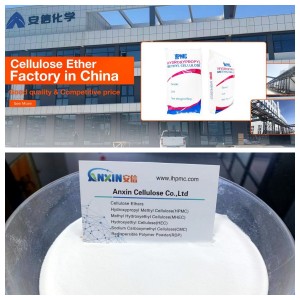Hydroxypropyl methylcellulose (HPMC) is a common cellulose ether polymer widely used in building materials. As a high-performance additive, HPMC plays a vital role in gypsum plaster, significantly improving workability and enhancing the quality of the finished product, while meeting the environmental and energy-saving requirements of modern construction. As a key material for interior wall decoration and leveling, gypsum plaster places high demands on both workability and finished product performance. Therefore, the addition of HPMC is an effective means of improving the performance of gypsum-based materials.
1. Basic Properties of HPMC
HPMC is chemically modified from natural cellulose and exhibits excellent water solubility, thickening, water retention, and film-forming properties. In aqueous solution, it forms a transparent, viscous colloidal solution, imparting excellent workability to gypsum plaster.
Key properties include:
Water retention: Reduces rapid evaporation of water, ensuring sufficient hydration of the gypsum.
Thickening: Improves the consistency of gypsum plaster, enhancing smooth application. Construction Adaptability: Increases lubricity and ductility for easier handling.
Environmental Safety: Non-toxic and harmless, meeting green building material requirements.
2. The Role of HPMC in Gypsum Plaster
Gypsum plaster is primarily used for leveling and decoration of interior walls and ceilings, and its performance directly impacts the decorative effect. The addition of HPMC can effectively improve the following aspects:
2.1. Improved Water Retention
Excessive water loss during gypsum plaster construction can lead to surface cracking, powdering, or insufficient strength. HPMC forms a uniform film on the gypsum surface, effectively slowing water evaporation and allowing sufficient time for crystallization during the curing process, thereby increasing the overall density and strength of the plaster.
2.2. Improved Workability
HPMC increases the lubricity of gypsum plaster, making application smoother and providing a pleasant feel, significantly reducing labor intensity. It also improves the adhesion of the mortar, reducing sagging during construction and ensuring uniform adhesion of the plaster to the wall surface.
2.3. Enhanced Crack Resistance
Due to the water-retention properties of HPMC, gypsum plaster can prevent shrinkage cracks caused by uneven water loss during the curing process. Furthermore, the thickening effect of HPMC helps the plaster form a more stable bond with the substrate, reducing the risk of cracking later.
2.4. Extended Open Time
In actual construction, appropriately extending the working time of plaster can help improve construction efficiency. HPMC can effectively extend the open time of gypsum plaster, allowing construction workers more time for adjustment, thereby improving construction quality.
2.5. Improved Finished Product Quality
The addition of HPMC makes the gypsum plaster surface smoother and finer, reducing quality issues such as powdering and hollowing, laying a good foundation for subsequent coating or tile application.
3. Application Advantages
Compared to ordinary gypsum plaster without modifiers, gypsum plaster containing HPMC exhibits significant advantages:
Improved workability and smoother handling;
Reduced defects caused by moisture loss;
Improved adhesion and durability;
Meeting the environmental and energy-saving requirements of modern construction.
HPMC, while used in relatively low dosages in gypsum plaster, delivers significant benefits and offers a high cost-effectiveness, making it an indispensable and key additive for gypsum-based building materials.
4. Application Precautions
When using HPMC-modified gypsum plaster, the following points should be noted:
Dosage Control: Excessive HPMC dosage can affect the setting time and strength of the plaster. The dosage should generally be precisely controlled according to the product formula.
Compatibility with Other Admixtures: Ensure HPMC is compatible with additives such as retarders and water reducers to avoid affecting the performance of the gypsum plaster.
Application Environment: When working in high-temperature or low-humidity environments, the HPMC content should be adjusted according to the conditions to ensure optimal results.
The use of hydroxypropyl methylcellulose (HPMC) in gypsum plaster not only improves construction performance and finished product quality, but also enhances the material’s stability and durability. With the increasing popularity of green and high-performance building materials, the use of HPMC in gypsum plaster will become even more widespread, becoming a key driver of high-quality development in the construction industry.
Post time: Sep-04-2025

